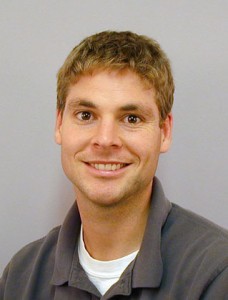27 May Ultrasound Able To Reposition and Facilitate Passage Of Kidney Stones
 MedicalResearch.com Interview with:
MedicalResearch.com Interview with:
Dr. Michael Bailey, Ph.D.
Senior Principal Engineer
Assistant Professor, Mechanical Engineering
and Adjunct Assistant Professor, Urology
University of Washington
Medical Research: What is the background for this study? What are the main findings?
Dr. Bailey: Ultrasonic propulsion is a new technology that uses focused ultrasound energy to reposition kidney stones transcutaneously. We report the findings from the first human investigational trial of ultrasonic propulsion toward the applications of expelling small stones and dislodging large obstructing stones. Subjects underwent ultrasonic propulsion either awake without sedation or during ureteroscopy while anesthetized. A pain questionnaire was completed before, during, and after propulsion for awake subjects. Potential adverse events were assessed weekly for 3 weeks after propulsion for all subjects.
The primary outcome was to reposition stones in the collecting system. Secondary outcomes included safety, controlled movement of stones, and movement of stones < 5 mm and ≥ 5 mm. Stones were localized and repositioned in 14 of 15 enrolled subjects. Of the 43 targets, 28 (65%) showed some level of movement while 13 (30%) were displaced to a new location > 3 mm. No adverse events were reported. Mild discomfort during the procedure was rare, brief, and self-limited. Stones were moved in a controlled direction with over 30 fragments being passed by most patients who previously had a lithotripsy procedure. The largest stone moved was 10 mm. One patient experienced pain relief during treatment of an obstructing stone. In 4 subjects a seemingly large stone, which might have required surgery, was determined to be a cluster of small passable stones.
Medical Research: What should clinicians and patients take away from your report?
Dr. Bailey: Ultrasonic propulsion was able to successfully reposition stones and facilitate passage in humans with no adverse events associated with the investigational procedure.
Medical Research: What recommendations do you have for future research as a result of this study?
Dr. Bailey: NIH NIDDK and the National Space Biomedical Research Program continue to support our research. We have FDA approval for an additional 15 subject study. The University of Washington has licensed the technology to a start-up company SonoMotion, Inc.
Citation: State-of-the-Art Lecture American Urological Association May 2015
Ultrasound Propulsion of Stones
Presenter: Michael Bailey, MD
[wysija_form id=”3″]
MedicalResearch.com Interview with: Dr. Michael Bailey, Ph.D., Senior Principal Engineer, Assistant Professor, Mechanical Engineering, and Adjunct Assistant Professor, Urology, & University of Washington (2015). Ultrasound Able To Reposition and Facilitate Passage Of Kidney Stones MedicalResearch.com
Last Updated on May 27, 2015 by Marie Benz MD FAAD
